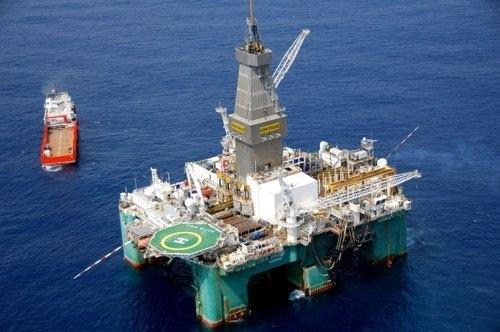West Africa is particularly active at the moment, following well-publicised recent finds - but there are equally significant operations in the east
There is more oil in East Africa.
The two latest wells drilled in western Uganda, close to the shore of Lake Albert, have both made important new discoveries.
The finds highlight the fast-growing reserves of the Lake Albert basin, where oil production is projected to start in 2015. Both wells, drilled by UK-Irish company Tullow in Block 1, proved-up structures which lie close to fields already being studied for production, so they are expected to be included in the development plans. The company said the Jobi-East-1 well is highly promising because it confirms the Jobi-East structure, which lies just east of the Jobi-Rii field - originally called Buffalo-Giraffe and regarded as Uganda’s largest discovery so far. The Jobi-East-1 well was drilled 4.4km east of the discovery well for the Jobi-Rii field, and passed through a net 15 metres of oil zones and 5 metres of gas zones.
The reservoirs - described as of high quality - lie at relatively shallow depths, which reduces the likely development cost. The well was drilled to a total depth of only 563 metres. Tullow plans to test the well later, after pressing on with the drilling of up to four Jobi-East appraisal wells.
The second discovery was made with the Mpyo-3 well, drilled 1.6km southeast of the Mpyo-1 discovery well. The well found 21 metres of oil sands at a depth of only 340 metres, and was drilled-out to a total depth of 513 metres. Logging showed highly viscous crude, similar to that of the discovery well.
The well was suspended for future testing. Drilling formations Prospects for West Africa’s pre-salt oil structures - difficult-to-find reservoirs lying under salt layers - have been lifted by a discovery off Gabon. US company Harvest Natural Resources made a discovery with its Dussafu Ruche Marin-1 well, which it drilled to test the pre-salt Gamba and Dentale formations. The well found a 27-metre oil column holding just under 17 metres net of oil zones in the Gamba formation.
Harvest says it plans to sidetrack the well to appraise the extent of the discovery, and it will also deepen the well into the Dentale formation. The firm used the Transocean Sedneth 701 semi-submersible for the well, in 116 metres of water. in Ghana, US firm Hess made a discovery with its Paradise-1 well, drilled in the Deepwater Tano/Cape Three Points licence in water 1,841 metres deep. The well found a net 149 metres of oil and condensate zones, over three reservoir intervals. Hess said it will work with the Ghana National Petroleum Corporation, its 10 per cent partner, to plan appraisal drilling.
Tullow made the first discovery of oil in a Cenomanian-age reservoir in its West Cape Three Points licence, raising the prospects for additional finds in reservoirs of the same age. The firm’s Banda-1 well, drilled 9.6km southeast of the Odum discovery, showed over 100 metres of lowporosity sandstone reservoir holding three metres of oil zones. The well, in water 921 metres deep, was drilled by the Atwood Hunter semisubmersible.
Nigeria remains vibrant. Oil and gas production by the Nigerian Petroleum Development Company, a subsidiary of the state’s Nigerian National Petroleum Corporation, has increased to 102,000 barrels/day of oil-equivalent, up from 60,000 barrels/day of oil-equivalent until early last year. Present output is made up of 90,000 barrels/day of oil and over 500mn cubic metres/year of gas. Behind the increase is the sale by Shell and partners of their 45 per cent interests in the OML 4, 38 and 41 licences to Nigeria’s Seplat last year. At the time of the sale, NNPC transferred its 55 per cent interests to NPDC.
The subsidiary is stepping-up production from the three areas and expects to reach 35,000 barrels/day of oil-equivalent by the end of this year. NPDC has a target of reaching a production 250,000 barrels/day of oil-equivalent by 2015, from a reserves base of 1.5bn barrels.





